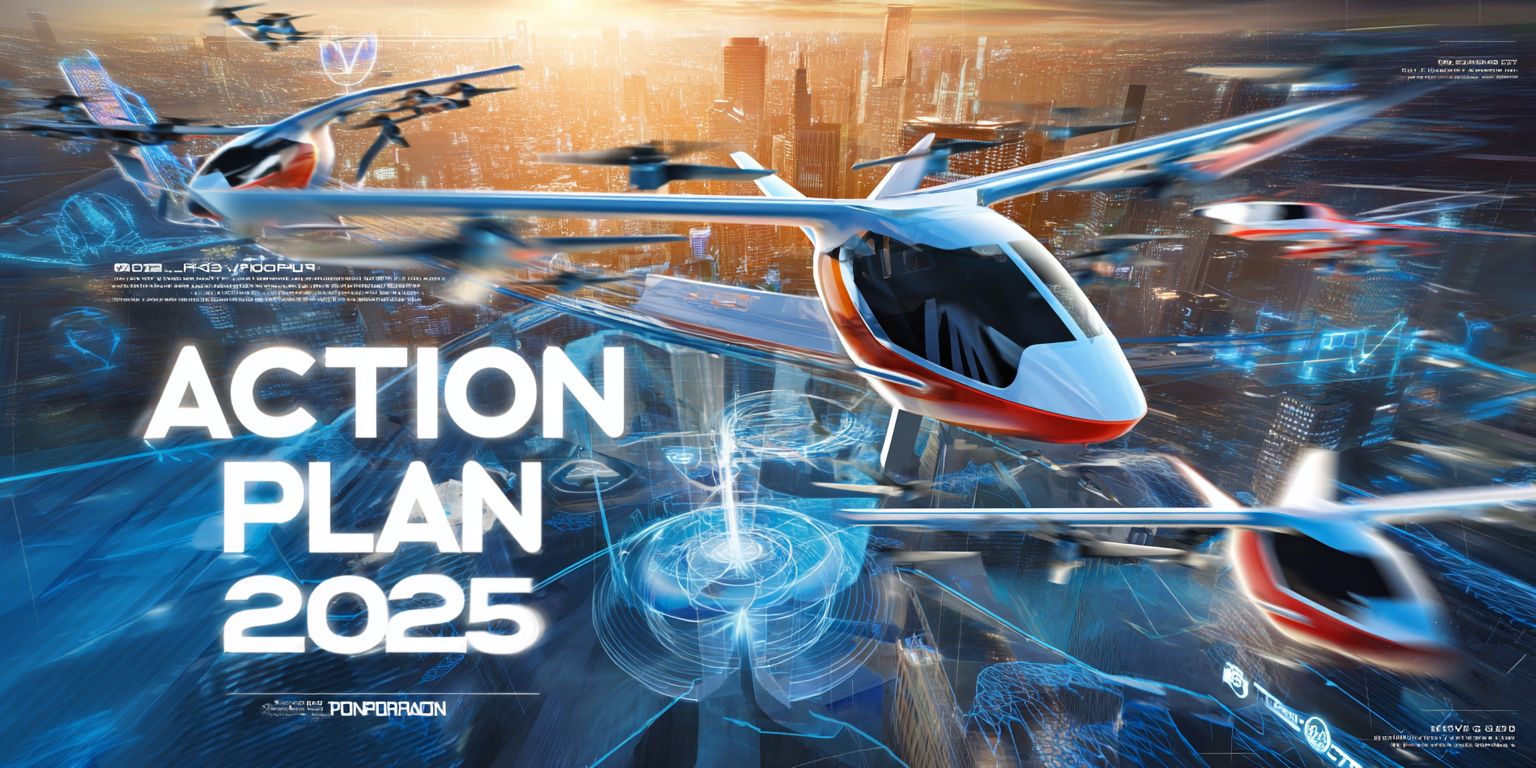China’s low-altitude economy (LAE), which covers airspace generally below 1,000 meters and extends up to 3,000–4,000 meters in select corridors, has moved from early trials to an essential part of urban and regional mobility. Today, drones carry out crop spraying, eVTOLs conduct daily test flights, and dedicated low-altitude flight corridors manage aircraft through crowded city skies. The executives profiled below write the rules, design the aircraft, secure the funding, and prove the business cases, whether for air taxis, drone deliveries, precision agriculture, or emergency response. Their work shows how coordinated action can turn low-altitude flight into a mainstream mode of transport.
China’s Low Altitude Flight Service System (低空飞行服务保障系统) is the structured, digitally managed framework for civilian operations in low-altitude airspace. Developed and overseen by the Civil Aviation Administration of China (CAAC), it integrates real-time flight approvals, route planning, airspace deconfliction, and system-wide oversight. This ensures safety and order even as hundreds of drones, air taxis, or service aircraft share the same airspace. The Low Altitude Flight Service System is now the backbone for scaling urban air mobility, logistics, agricultural flights, and emergency services across China.
Authorities estimate the industry will reach 1.5 trillion yuan in 2025, 2-3 trillion yuan in 2030 and 3.5 trillion yuan ($485 billion) by 2035. This progress comes from a close alliance of policymakers, researchers, and industry builders who turn regulation into certified aircraft, real infrastructure, and commercial operations.
Government Leaders:
Song Zhiyong (宋志勇) - CAAC Administrator
Position: Administrator, Civil Aviation Administration of China (CAAC)
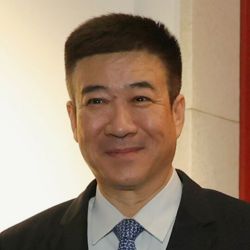 Song Zhiyong combines operational aviation expertise with regulatory leadership that has proved vital for China’s LAE development. A former Air China pilot and later its chairman, Song has served as CAAC Administrator since July 2022, bringing more than three decades of experience to the role.
Song Zhiyong combines operational aviation expertise with regulatory leadership that has proved vital for China’s LAE development. A former Air China pilot and later its chairman, Song has served as CAAC Administrator since July 2022, bringing more than three decades of experience to the role.
Under his leadership, CAAC established the first full certification pathway for autonomous eVTOLs. EHang’s EH216-S received its type certificate on October 13, 2023, production certificate on April 7, 2024, and airworthiness certificate by December 2023. His administration also introduced flexible Low Altitude Flight Service System management protocols, cutting through longstanding bureaucratic barriers and opening the door to scalable low-altitude commercial operations—a hurdle that remains in many other countries.
Song’s approach balances regulatory safety with openness to innovation. He is now overseeing amendments to China’s Civil Aviation Law to further support LAE growth and enable broader integration of new air mobility technologies.
Zheng Shanjie (郑栅洁) - NDRC Director
Position: Director, National Development and Reform Commission
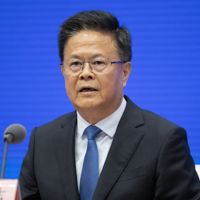 Zheng Shanjie pushed LAE up to national priority in 2024, creating the NDRC’s dedicated Low-Altitude Economy Development Division (Dec 2024). This move made China the first country to provide a cross-ministry management mechanism with its own budget, which has accelerated local government LAE initiatives from Hunan to Jiangxi and coordinated national Low Altitude Flight Service System investment.
Zheng Shanjie pushed LAE up to national priority in 2024, creating the NDRC’s dedicated Low-Altitude Economy Development Division (Dec 2024). This move made China the first country to provide a cross-ministry management mechanism with its own budget, which has accelerated local government LAE initiatives from Hunan to Jiangxi and coordinated national Low Altitude Flight Service System investment.
Under Zheng's direction, NDRC has positioned LAE as a cornerstone of China's "new quality productive forces" strategy, moving beyond traditional economic drivers.
Key Points – Why These Officials Matter:
Song Zhiyong has turned CAAC into a fast-moving, innovation-friendly regulator, issuing the world’s first passenger-eVTOL type certificate and piloting flexible air-space rules that cut red tape without compromising safety.
Zheng Shanjie made low-altitude aviation a national economic pillar by founding the NDRC’s dedicated LAE division, unlocking top-level funding and cross-agency coordination that provinces now emulate.
Academic Trailblazers:
Professor Li Zexiang (李泽湘) - HKUST/DJI Chairman
Position: Chair Professor, HKUST; Chairman, DJI
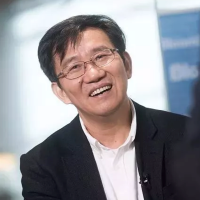 Professor Li Zexiang epitomizes successful academic entrepreneurship. As Frank Wang's mentor at Hong Kong University of Science and Technology, Li provided crucial early support that enabled DJI's transformation into the world's largest drone manufacturer.
Professor Li Zexiang epitomizes successful academic entrepreneurship. As Frank Wang's mentor at Hong Kong University of Science and Technology, Li provided crucial early support that enabled DJI's transformation into the world's largest drone manufacturer.
Beyond DJI, Li has incubated over 140 technology companies through HKUST's Automation Technology Center, achieving an 80% survival rate. His "mentor and student" angel investment model has transformed Chinese university engagement with entrepreneurship, directly contributing to China's LAE ecosystem development.
Li's 2021 establishment of Shenzhen Innovation Academy creates comprehensive innovation ecosystems for young entrepreneurs, ensuring continued talent pipeline for China's LAE industry.
Professor Hai Yang (杨海) - HKUST Transportation Expert
Position: Chair Professor, Civil and Environmental Engineering, HKUST
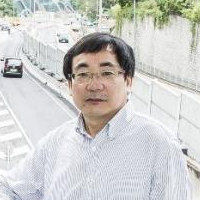 Professor Hai Yang leads transport research that informs low-altitude airspace management and urban air mobility planning. He is conducting a Strategic Public Policy research project addressing regulatory fragmentation in the Guangdong-Hong Kong-Macao Greater Bay Area.
Professor Hai Yang leads transport research that informs low-altitude airspace management and urban air mobility planning. He is conducting a Strategic Public Policy research project addressing regulatory fragmentation in the Guangdong-Hong Kong-Macao Greater Bay Area.
Yang's research contributions include optimizing UAV services for urban inspection and delivery, providing scientific foundations for scalable LAE operations. His recognition as Chang Jiang Chair Professor by China's Ministry of Education reflects his influence on national transportation research priorities.
Professor Huang Xun (黄迅) - Peking University LAE Theorist
Position: Professor, College of Engineering, Peking University
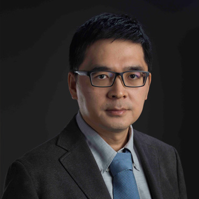 Professor Huang achieved a breakthrough for LAE academic credibility with his Nature journal publication—the first article on low-altitude economy in this prestigious publication. His vision of the "low-altitude vehicle era" draws parallels between current LAE development and the historical transition from horse-drawn transport to automobiles.
Professor Huang achieved a breakthrough for LAE academic credibility with his Nature journal publication—the first article on low-altitude economy in this prestigious publication. His vision of the "low-altitude vehicle era" draws parallels between current LAE development and the historical transition from horse-drawn transport to automobiles.
Huang's interdisciplinary approach addresses fundamental challenges including safety, privacy, and environmental impacts that must be resolved for widespread LAE adoption. His educational initiatives at Peking University, including hands-on aircraft design courses, are preparing China's next generation of LAE professionals.
Qu Tengteng (曲腾腾) - Peking University Airspace Systems Expert
Position: Researcher, College of Engineering, Peking University
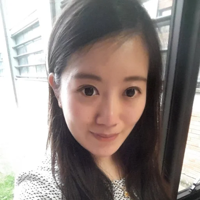 Qu Tengteng has developed an inovative geospatial grid systems that create "invisible roads" for safe low-altitude flight—addressing one of LAE's most critical infrastructure challenges. Her system converts three-dimensional spatial coordinates into binary codes, enabling real-time dense airway grids that prevent collisions and navigate around obstacles.
Qu Tengteng has developed an inovative geospatial grid systems that create "invisible roads" for safe low-altitude flight—addressing one of LAE's most critical infrastructure challenges. Her system converts three-dimensional spatial coordinates into binary codes, enabling real-time dense airway grids that prevent collisions and navigate around obstacles.
This technology represents a breakthrough in airspace management, providing the digital framework necessary for high-density LAE operations in urban environments. Her work is being implemented in pilot programs across China and has potential to become the global standard.
Key Points – Why These Academic Leaders Matter
Li Zexiang bridges Silicon Valley innovation with Chinese manufacturing through his "mentor and student" incubation model—his 140+ company startups (including DJI) generate over $12 billion in value.
Hai Yang provides the scientific foundation for LAE scalability through his transport optimization research and Greater Bay Area air mobility planning—his Chang Jiang Chair professorship and State Natural Science Awards position him to influence national LAE infrastructure policies.
Huang Xun achieved global academic recognition for LAE with his Nature publication (the first on low-altitude economy in this prestigious journal), establishing scientific credibility for China's transition to the "low-altitude vehicle era".
Qu Tengteng solves LAE's most critical infrastructure challenge through her "invisible roads" geospatial grid system—converting 3D coordinates to binary codes for real-time airway management that prevents collisions and enables high-density urban operations.
Industry Leaders:
Frank Wang (汪滔) — Founder & CEO, DJI
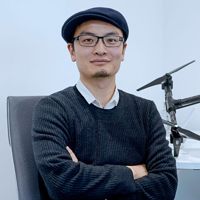 Frank Wang turned a 2006 dorm-room flight-controller project into DJI, the company that about 70% of the world’s civilian drones and operates in more than 100 countries. Born in Hangzhou in 1980, Wang studied electronic engineering at HKUST, where he built an autonomous helicopter for his thesis. A small seed grant let him relocate to Shenzhen and hire a handful of engineers. Within five years DJI launched its first integrated quadcopter, and the 2013 Phantom made aerial photography easy for non-experts.
Frank Wang turned a 2006 dorm-room flight-controller project into DJI, the company that about 70% of the world’s civilian drones and operates in more than 100 countries. Born in Hangzhou in 1980, Wang studied electronic engineering at HKUST, where he built an autonomous helicopter for his thesis. A small seed grant let him relocate to Shenzhen and hire a handful of engineers. Within five years DJI launched its first integrated quadcopter, and the 2013 Phantom made aerial photography easy for non-experts.
Wang insists on tight hardware–software integration and in-house manufacturing. DJI introduced the first consumer drones with native three-axis gimbals, AI obstacle-avoidance, and digital HD downlink, each of which re-set industry expectations. By 2024 the firm had filed roughly 19,000 patents, with more than 8,000 granted. Engineering and research still absorb about a quarter of annual spending.
Commercial scale is equally notable. 2024 revenue is estimated at US $3.5 billion, generated by a product line that now ranges from 249-gram camera drones to 55-kg agricultural rigs. More than 500,000 Agras units spray crops on six continents, and the FlightHub/Terra software stack underpins city-level digital-twin programs across China.
U.S. export restrictions led to a 2025 multi-agency security audit, which DJI passed, preserving market access. Wang’s next push is heavier-lift cargo UAVs that use the firm’s proven flight-control and perception stacks. If successful, DJI will extend its influence from small-drone dominance to regional logistics, reinforcing Wang’s reputation as the most consequential entrepreneur in civilian aerial robotics.
Hu Huazhi (胡华智) — Founder & CEO, EHang
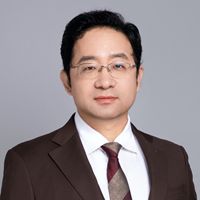 Hu Huazhi founded EHang in 2014 to build pilotless passenger eVTOLs. His EH216-S became the world’s first autonomous air taxi to clear an entire civil-aviation certification suite: type certificate on 13 Oct 2023, airworthiness certificate on 21 Dec 2023, and production certificate in April 2024 (CAAC notice). The aircraft completed more than 30,000 autonomous trial flights in varied weather and terrain before commercial approval.
Hu Huazhi founded EHang in 2014 to build pilotless passenger eVTOLs. His EH216-S became the world’s first autonomous air taxi to clear an entire civil-aviation certification suite: type certificate on 13 Oct 2023, airworthiness certificate on 21 Dec 2023, and production certificate in April 2024 (CAAC notice). The aircraft completed more than 30,000 autonomous trial flights in varied weather and terrain before commercial approval.
A computer-science graduate of Tsinghua University, Hu designed a cloud command-and-control platform that fuses diagnostics, route planning, and fleet management. Today the system supports sightseeing services in Guangzhou, Shenzhen, and Zhengzhou and will expand to logistics and emergency response once additional vertiports are finished.
EHang’s fully autonomous concept cuts pilot-training costs and simplifies operations; every vehicle flies a predefined path at 120 m altitude and 90–130 km/h cruise. The CAAC now treats the model as a template for future small-category passenger eVTOLs, placing Hu at the center of national standards setting. With aircraft deliveries already under way, EHang is moving from technology showcase to revenue service—an inflection that validates autonomy as a scalable solution rather than a research novelty.
He Xiaopeng (何小鹏) — Chairman & CEO, XPeng Motors; Chairman, XPeng AeroHT
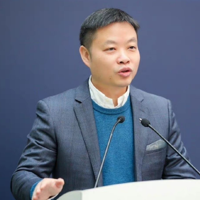 Best known for building XPeng Motors into a top-five Chinese EV brand, He Xiaopeng entered aviation in 2020 by acquiring start-up Heitech and re-branding it XPeng AeroHT. He provides automotive-grade supply chains and software architecture to eVTOL manufacturing—an unusual, tightly integrated strategy.
Best known for building XPeng Motors into a top-five Chinese EV brand, He Xiaopeng entered aviation in 2020 by acquiring start-up Heitech and re-branding it XPeng AeroHT. He provides automotive-grade supply chains and software architecture to eVTOL manufacturing—an unusual, tightly integrated strategy.
Funding has been rapid: US $500 million Series A in Oct 2021, $150 million Series B1 in Aug 2024, and $100 million Series B2 in Jul 2025, bringing disclosed capital above $900 million. Construction is under way on a 180,000 m² plant in Guangzhou designed for 10,000 air-modules a year.
AeroHT is developing two product lines. The X2 is a foldable, autonomous two-seater that has completed public demos in Dubai and Shenzhen. The flagship Land Aircraft Carrier couples a six-wheel electric van with a detachable eVTOL; the ground module recharges the aircraft between flights, targeting private owners and high-end tourism. Mass production is scheduled for 2026 at a target price below RMB 2 million.
By translating automotive cost controls and lidar-based perception into aviation, He positions XPeng to blur the boundary between road and low-altitude travel—advancing China’s policy goal of “multipolar mobility” while keeping unit economics in line with premium SUVs.
Tian Yu (田瑜) — Founder & CEO, AutoFlight
 A 35-year aviation engineer with 300 plus patents, Tian Yu built Yuneec—the world’s first FAA-certified electric fixed-wing—before founding AutoFlight in 2017. He adopted a lift-and-cruise architecture for the five-seat Prosperity series, reducing complexity by separating eight lift rotors from a pusher propeller.
A 35-year aviation engineer with 300 plus patents, Tian Yu built Yuneec—the world’s first FAA-certified electric fixed-wing—before founding AutoFlight in 2017. He adopted a lift-and-cruise architecture for the five-seat Prosperity series, reducing complexity by separating eight lift rotors from a pusher propeller.
Progress is test-driven. On 23 Feb 2023 a Gen-4 prototype flew 250.3 km on one charge, setting the current eVTOL distance record. On 27 Feb 2024 the same model completed a 50 km fully autonomous crossing from Shenzhen to Zhuhai in 20 minutes, the world’s first public inter-city eVTOL demo over water.
AutoFlight runs parallel certification programs with CAAC and EASA, using Shanghai, Augsburg, and California sites. A strategic investment from CATL in Aug 2024—hundreds of millions of dollars, pairs next-generation aviation batteries with AutoFlight airframes. Total external funding now exceeds US $100 million.
Formation flights of three prototypes in July 2023 proved close-proximity operations, essential for future air-taxi fleets. Tian’s goal is commercial service in China’s Greater Bay Area by 2026 and EASA approval soon after, positioning AutoFlight as a credible long-range alternative to shorter-hop city eVTOLs.
Wang Wei (王卫) — Founder & Chairman, SF Express
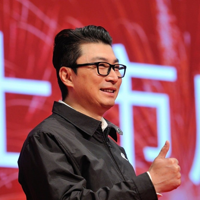 Wang Wei started SF Express in 1993 with US $13,000 and turned it into China’s largest private courier. Determined to shorten rural delivery times, he pushed into unmanned logistics early. SF’s subsidiary Jiangxi Fengyu Shuntu received China’s first CAAC drone-operation license on 27 Mar 2018, enabling legal commercial flights.
Wang Wei started SF Express in 1993 with US $13,000 and turned it into China’s largest private courier. Determined to shorten rural delivery times, he pushed into unmanned logistics early. SF’s subsidiary Jiangxi Fengyu Shuntu received China’s first CAAC drone-operation license on 27 Mar 2018, enabling legal commercial flights.
Through offshoot Phoenix Wings, SF has built a three-layer network—freighters, trunk-route cargo UAVs, and last-mile drones. By April 2025 Phoenix Wings had logged over 1.19 million flights and 6.27 million km of autonomous operations. Daily throughput at its Shenzhen low-altitude logistics center exceeds 20,000 parcels with 1,200 autonomous flights. Workhorse platforms carry up to 25 kg over 100 km, serving mountain villages and island communities.
SF Airlines, the group’s cargo carrier, moved nearly 1.2 million tonnes in 2024 and operates 15 international routes from Ezhou hub, integrating drone and wide-body networks for overnight delivery. Wang is scaling heavy-lift UAVs for industrial freight and targets 30% growth in oversized air cargo during 2025.
His model—regulatory first, then high-volume execution—set the template many Chinese logistics firms now follow. It shows how low-altitude drones can mesh with conventional air cargo to deliver nationwide within 36 hours, a benchmark Wang established seven years ago and continues to refine.
Wang Zhenhui (王振辉) — CEO, JD Logistics
 Since 2016 Wang Zhenhui has turned JD Logistics from an internal fulfillment arm into the world’s largest revenue-generating logistics company. He championed automation early: JD received China’s first provincial drone-operation approvals in Shaanxi in 2018, enabling routine rural deliveries.
Since 2016 Wang Zhenhui has turned JD Logistics from an internal fulfillment arm into the world’s largest revenue-generating logistics company. He championed automation early: JD received China’s first provincial drone-operation approvals in Shaanxi in 2018, enabling routine rural deliveries.
The company’s three-level intelligent logistics system links heavy-load drones (>1 ton), branch-line UAVs (200 kg–2 t), and last-mile craft (5–50 kg). JD’s drone fleet has accumulated 400,000 plus safe flight-minutes and 160,000 km of deliveries across more than 20 Chinese cities. Vehicles operate Level-4 autonomy on public roads for ground hand-off, and the firm maintains its own vertiport network in Shaanxi and Hainan.
Wang integrates drones with automated warehouses and driverless ground vehicles to deliver on his "24-hour nationwide, 48-hour global" service promise. Heavy-load Jinghong UAVs connect regional depots across 800 km routes, while smaller units serve island and mountain communities that trucks can only reach by taking 100-km detours. During COVID-19 lockdowns, JD drones delivered essential medical supplies to lakeside villages when roads were closed, demonstrating their crucial value during emergencies.
Educated at USTB, Renmin University, and CEIBS, Wang focuses on cost per parcel rather than headline speed: drones fly only when they beat road transport on total cost of ownership. This pragmatic lens has kept JD profitable while expanding autonomous operations and positions the firm to leverage China’s forthcoming national low-altitude traffic-management platform.
Key Points – Why These Industry Leaders Matter
Frank Wang created the world's largest drone manufacturer controlling 63–68% of global market share, with DJI's 400,000 agricultural drones globally transforming farming across 178 million hectares while generating $4.5 billion in annual revenue.
Hu Huazhi achieved the aviation industry's most significant regulatory breakthrough by securing the world's first type certificate, production certificate, and airworthiness certificate for passenger eVTOLs, enabling EHang to begin commercial operations and validate the entire global eVTOL business model.
He Xiaopeng pioneered automotive-aviation integration through XPeng AeroHT's $900 million in funding and innovative Land Aircraft Carrier concept, demonstrating how established EV manufacturers can leverage production expertise to scale eVTOL manufacturing by 2026.
Tian Yu brings unmatched technical depth with 300+ aviation patents spanning three decades, leading AutoFlight to achieve the world's first intercity eVTOL demonstration flight while establishing international operations across China, Germany, and the United States.
Wang Wei built China’s first commercial drone logistics network through SF Express, pioneering regulatory pathways and demonstrating the operational scalability of the Low Altitude Flight Service System for package delivery across varied and challenging regions
Wang Zhenhui Scaled autonomous logistics through JD's comprehensive air-ground delivery system, demonstrating heavy-load drone capabilities for inter-city transport
Ecosystem Builders:
Yang Jincai (杨金才) - Drone Industry Association Leader
Position: Chairman, Shenzhen UAV Industry Association; Chairman, World UAV Federation
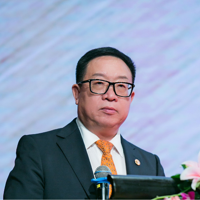 Yang Jincai has built essential infrastructure for China's drone ecosystem through industry organization leadership. His founding of Shenzhen UAV Industry Association in 2015 created comprehensive industry standards, while the World UAV Federation extends Chinese influence globally across over 20 countries.
Yang Jincai has built essential infrastructure for China's drone ecosystem through industry organization leadership. His founding of Shenzhen UAV Industry Association in 2015 created comprehensive industry standards, while the World UAV Federation extends Chinese influence globally across over 20 countries.
His annual Shenzhen International UAV Expo and Drone World Congress provide crucial platforms for industry development. Under his leadership, Shenzhen has become the global UAV capital, accounting for over 60% of worldwide low-altitude unmanned aerial vehicle patent applications.
Luo Jun (罗俊) - China Low-Altitude Economic Alliance Executive Chairman
Position: Executive Chairman, China Low-Altitude Economic Alliance
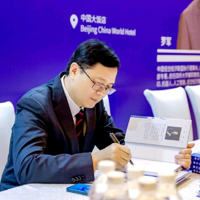 Luo Jun coordinates industry-wide development through leadership of the China Low-Altitude Economic Alliance, established in August 2024 with over 100 leading enterprises. His prediction of at least 100 Chinese eVTOL firms by 2030 reflects deep understanding of industry growth dynamics.
Luo Jun coordinates industry-wide development through leadership of the China Low-Altitude Economic Alliance, established in August 2024 with over 100 leading enterprises. His prediction of at least 100 Chinese eVTOL firms by 2030 reflects deep understanding of industry growth dynamics.
Under his coordination, the alliance has established research institutes across China and works closely with government departments on regulatory frameworks. His industry leadership facilitates collaboration between companies, government agencies, and research institutions.
Key Points – Why These Ecosystem Builders Matter
Yang Jincai built the essential industry infrastructure through founding the Shenzhen UAV Industry Association and World UAV Federation, positioning Shenzhen as the global UAV capital accounting for 74% of worldwide consumer drone market share and hosting annual industry gatherings that set global standards.
Luo Jun coordinates China's LAE industry development through the China Low-Altitude Economic Alliance of over 100 enterprises, facilitating government-industry collaboration that accelerates policy development and creates the institutional framework enabling China's projected 100+ eVTOL companies by 2030.
Wrap Up:
These leaders have collectively positioned China as the global leader in LAE development. Their coordinated approach, combining top-down policy support with bottom-up innovation, has created an ecosystem enabling rapid commercial deployment of advanced air mobility technologies.
The regulatory frameworks established by government leaders like Song Zhiyong have eliminated barriers that constrain LAE development in other countries. Academic researchers like Professor Hai Yang and Qu Tengteng have solved fundamental technical challenges, while industry pioneers like Frank Wang and Hu Huazhi have demonstrated commercial viability.
Their success reflects a uniquely Chinese approach to emerging technology development: coordinated leadership across government, academia, and industry working toward shared objectives. As China's LAE industry grows toward its projected 3.5 trillion yuan value by 2035, these leaders will continue shaping not only domestic development but global standards for low-altitude mobility.



